Building a Business Case for EHSQ Software in Pharmaceutical Manufacturing – 5 Tips
In the pharmaceutical industry, the stakes are high when it comes to the quality and safety of products. Manual processes just don’t cut it anymore. Quality, compliance, and safety software isn’t just a nice-to-have—it’s essential.
But let’s face it, shifting from manual processes to digital solutions isn’t always easy. It involves balancing the upfront costs, minimizing operational disruptions, and ensuring compatibility with existing systems. Plus, you need to bring everyone on board, from the ground floor to the C-suite, making sure everyone sees the value it adds.
That’s why building a compelling business case is key. By clearly outlining the significant benefits of EHSQ software and the risks of going without it, you can pave the way for an integrated quality, compliance, and safety platform.
Choosing the right angle
To you and me, the benefits of EHSQ software might seem clear.
It offers a solid framework that enables you to manage compliance, reduce risks, strengthen safety protocols, and maintain high product quality.
But for senior management, who always have an eye on the budget, it’s vital to show that the benefits go far beyond managing day-to-day operations. You need to highlight how it touches every part of the business, boosting productivity, driving efficiencies, and building a culture of continuous improvement that leads to better results.
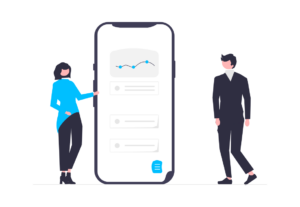
Building your business case
Here are 5 angles of attack that will help you build a strong business case with tangible benefits that directly impact your company’s bottom line.
- 1. Highlight the cost of non-compliance
- 2. Calculate savings from risk reduction
- 3. Showcase efficiency gains
- 4. Demonstrate how it makes better decisions possible
- 5. Present long-term strategic benefits
1. Highlight the cost of non-compliance
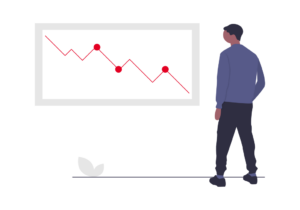
The primary value proposition of EHSQ software? It makes compliance simple.
By automating and tracking every step of the compliance process, it ensures nothing is overlooked. This cuts the risk of financial penalties and minimizes the resources spent on compliance management.
Tips:
- Calculate potential fines and penalties: Review recent fines from key regulators like the FDA or EMA to get a clear picture of the financial risks.
- Estimate the costs of manual compliance: Look at your current spending on compliance management to see the potential savings with automation. This includes everything from labor costs of compliance staff to the costs of audits and data handling.
- Quantify the risk of operational disruptions: Non-compliance could shut down your operations or force product recalls. Use historical data to estimate financial impacts of shutdowns or recalls.
- Account for reputational damage: Consider effects on stock prices, investor relations, lost sales, and market position if non-compliance becomes public.
- Demonstrate savings and ROI: Demonstrate how automation reduces costs, enhances data accuracy, and quickens response times, using case studies as proof.
- Present scenario-based outcomes: Outline best, moderate, and worst-case financial scenarios with and without EHSQ software. Consider what might happen if regulations tighten or new compliance challenges arise.
2. Calculate savings from risk reduction
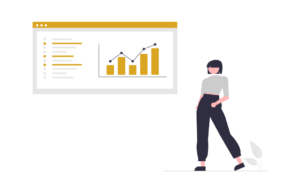
EHSQ software is an early warning system. With real-time data and advanced analytics, it helps you identify risks before they turn into expensive problems. This proactive approach not only saves money by preventing incidents but also shields your company from reputational damage.
Tips:
- Assess risks in your current operations: Identify vulnerabilities like compliance gaps, safety hazards, and quality issues. Then demonstrate what risk assessment looks like with EHSQ software, focusing on features such as automated compliance checks, real-time alerts, and thorough quality assurance processes.
- Highlight the direct and indirect costs of workplace accidents: Outline the direct costs of workplace accidents, such as medical expenses, compensation claims, and regulatory fines. And emphasize that indirect costs are often four to ten times higher.
- Quantify the financial impact: Use specific data to make the case more compelling. For instance, in the United States, employers pay almost $1 billion per week for workers’ compensation costs.[1]
- Highlight the potential for hefty fines: Get specific—a single health and safety violation in the UK can exceed £110,000, and in the US, failing to meet a basic requirement can cost around $129,000.[2]
- Demonstrate how EHSQ software reduces risk: Show how features like real-time monitoring and detailed analytics prevent incidents, reduce their severity, and support smarter decision-making.
- Quantify the financial benefits of risk reduction: Calculate savings from reduced fines, lower incident-related costs, reduced recall rates, and minimized downtime.
3. Showcase efficiency gains

A big plus of EHSQ software is how it boosts your operational efficiency. By automating routine tasks and streamlining data management, it cuts down on manual work. This frees up your team to focus on things that add more value, like strategic planning and innovating, instead of getting bogged down in administrative tasks.
Tips:
- Track error rates: Present the frequency of errors in compliance documentation, incident reports, and quality records, highlighting inefficiencies and the need for the accuracy improvements EHSQ software provides.
- Quantify the amount of time spent on generating reports: Illustrate the administrative burden of manual reporting processes and the potential for time savings with streamlined reporting features.
- Measure your audit preparation time: Detail the time and resources needed for regulatory audits, emphasizing the delays associated with manual data gathering and document management, and the benefits of centralized data systems.
- Monitor response times to quality events: Note how delays in incident response increase risk and disrupt operations, underscoring the value of real-time incident management.
- Assess resource allocation: Identify inefficiencies in the use of personnel, equipment, and materials, pointing out opportunities for optimization through EHSQ software.
4. Demonstrate how it makes better decisions possible
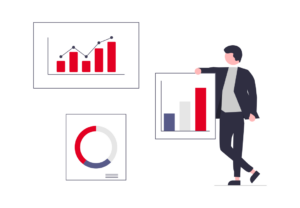
Having easy access to accurate information is key to making smart decisions. EHSQ software pulls together data from all areas, giving you a complete overview of your operations. This big-picture perspective helps with strategic planning and forecasting, making sure decision-makers have what they need to meet the company’s long-term goals.
Tips:
- Demonstrate current challenges: Outline existing issues such as manual data collection, siloed information, and the lack of real-time insights that hinder trend analysis and continuous improvement.
- Explain the regulatory landscape: Detail how regulatory bodies demand quick, precise data to explain the necessity for automated reporting.
- Pinpoint of EHSQ software can help: Focus on features like centralized data storage, automated workflows, and advanced analytics. Explain how these features reduce errors, improve data integrity, and provide real-time metrics and predictive analytics for better decision-making. Highlight the time and cost savings from more efficient processes and reduced administrative load.
5. Present long-term strategic benefits
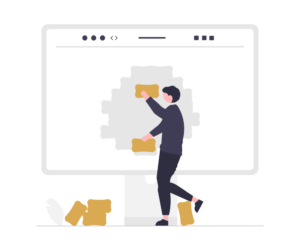
EHSQ software offers more than immediate compliance solutions—it’s about future-proofing your operations. By investing in EHSQ software, you’re investing in scalability and adaptability.
Tips:
- Showcase cost benefits of integration: Emphasize how consolidating systems with one software platform eliminates the need for multiple licenses, cuts implementation costs, and reduces training and maintenance expenses.
- Highlight the software’s modular design: Explain how its flexibility allows you to expand or modify functionalities as your business needs and market conditions evolve.
- Demonstrate scalability: Detail how the software grows with your business, supporting increased data volumes, more users, and evolving regulatory demands.
- Emphasize adaptability to regulatory changes: Point out the software’s built-in compliance updates and configurable workflows that help stay ahead of regulatory shifts and maintain compliance.
Leading the way with EHSQ software
Making a strong business case for EHSQ software is crucial. You need to show your senior leadership that this isn’t just another line item on the budget—it’s a strategic investment that significantly cuts risks, boosts efficiency, and cultivates a culture of continuous improvement.
With EHSQ software, you’re not just keeping up; you’re leading the way with better decision-making and streamlined operations.
Clearly communicating these benefits helps everyone, from the front lines to the executive suite, recognize the value. This software doesn’t just ensure compliance—it propels you to excel in a competitive market. It’s about staying proactive, prepared, and resilient, no matter the challenges.
Choose TenForce for smarter, cost-effective solutions that don’t compromise on quality. Let us show you how—book a demo today.
Sign Up for email updates about our latest projects, articles and online events.

Sources
[1] Occupational Safety and Health Administration: Business Case for Safety and Health, https://www.osha.gov/businesscase/costs
[2] Arinite Health & Safety: US Health & Safety – Comparing the Cost of Compliance vs. a Violation, https://www.arinite.co.uk/us-health-safety-comparing-cost-compliance-vs-violation
